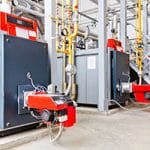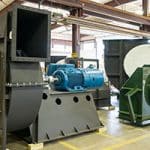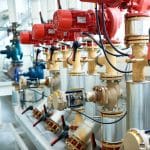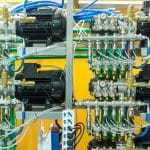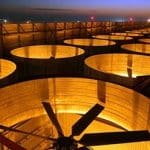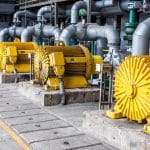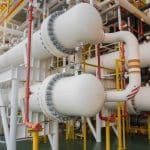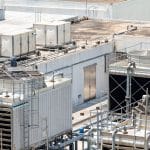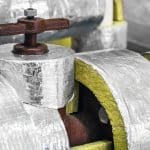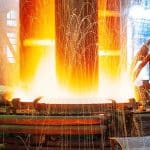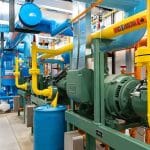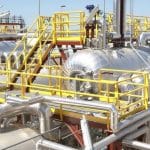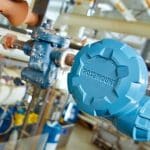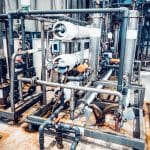The 3 kEys
- Keeping evaporator coils clean, as dust and debris buildup significantly reduces heat transfer efficiency. Cleaning coils with non-corrosive cleaning solutions ensures optimal energy transfer and prevents undue strain on the system.
- Blocked or malfunctioning fans can lead to uneven temperature distribution, causing the evaporator to work harder than necessary.
- Replacing or repairing damaged insulation minimizes unnecessary heat loss or gain, optimizing the evaporator’s performance.
Industrial evaporators play a crucial role in numerous industries, from food processing to chemical manufacturing, by removing moisture from materials through controlled heat and airflow. However, inefficiencies in operation can lead to excessive energy consumption, driving up costs and reducing overall productivity. Implementing a thorough maintenance regimen is essential for optimizing energy use and extending the lifespan of evaporators. By maintaining equipment regularly, facilities can prevent performance degradation, improve heat transfer efficiency, and reduce operational expenses.
This guide outlines a structured approach to industrial evaporator maintenance, categorizing tasks based on frequency: weekly, monthly, quarterly, and annual upkeep. Each section provides a detailed breakdown of key maintenance activities designed to enhance efficiency while minimizing energy waste.
Types of Industrial Evaporators
Industrial facilities employ a variety of evaporators, each designed to meet specific process needs. Understanding these types helps tailor maintenance strategies for optimal efficiency:
Falling Film Evaporators utilize a thin liquid film flowing down heated tubes, making them ideal for heat-sensitive materials in food processing and chemical industries. Their high efficiency in heat transfer requires frequent cleaning to prevent fouling. Filter-dryer.com offers a number of maintenance tips on this type of evaporator here: Maintenance and Troubleshooting Tips for Film Evaporators.
Forced Circulation Evaporators are designed for handling high-viscosity or heavily fouling liquids. They rely on pumps to circulate liquid through heat exchangers and are common in wastewater treatment and desalination. Regular monitoring of circulation pumps and heat exchanger surfaces ensures energy efficiency.
Rising Film Evaporators operate by utilizing vaporization to create an upward movement of liquid, reducing residence time and improving efficiency. These are widely used in pharmaceuticals and food processing, where maintaining clean surfaces is critical.
Multiple-Effect Evaporators (MEE) enhance energy efficiency by using vapor from one stage to heat the next. This design significantly reduces steam consumption and is commonly found in pulp and paper manufacturing, sugar production, and industrial wastewater treatment. Regular inspection of inter-stage connections ensures consistent performance.
Mechanical Vapor Recompression (MVR) Evaporators recycle vapor energy using compressors, making them highly energy efficient. Industries seeking to reduce steam consumption, such as dairy processing and zero-liquid discharge (ZLD) applications, benefit from these systems. Compressor maintenance and vapor recycling checks are essential.
Plate Evaporators employ compact, stacked plates instead of tubes, offering high heat transfer rates in a space-efficient design. They are commonly found in food, beverage, and pharmaceutical processing. Regular gasket inspections and cleaning prevent efficiency losses.
Dry Expansion Evaporators regulate the flow of refrigerant to optimize cooling performance. Found in industrial refrigeration and HVAC applications, these evaporators require periodic checks for refrigerant charge levels and expansion valve performance to avoid energy waste.
Weekly Maintenance: Addressing Immediate Efficiency Losses
Regular attention to daily and weekly maintenance tasks helps prevent minor issues from escalating into costly inefficiencies. A primary focus should be on keeping evaporator coils clean, as dust and debris buildup significantly reduces heat transfer efficiency. Cleaning coils with non-corrosive cleaning solutions ensures optimal energy transfer and prevents undue strain on the system.
Inspecting fans and ensuring proper airflow is another critical weekly task. Blocked or malfunctioning fans can lead to uneven temperature distribution, causing the evaporator to work harder than necessary. Checking for obstructions in airflow paths, verifying fan speed, and ensuring motor bearings are well-lubricated helps maintain consistent performance.
Draining and inspecting condensate lines and pans should also be part of the weekly regimen. Blockages or standing water can lead to microbial growth, increasing the likelihood of fouling that reduces efficiency. Regularly flushing these systems prevents such issues, keeping the evaporator running smoothly.
Monthly Maintenance: Fine-Tuning for Long-Term Performance
Beyond immediate operational concerns, monthly maintenance should focus on system calibration and fine-tuning. Ensuring refrigerant levels are within the recommended range is essential to prevent inefficiencies caused by overcharging or undercharging. Low refrigerant levels force the system to work harder, consuming more energy than necessary.
Checking insulation integrity along refrigerant lines and evaporator surfaces is another priority. Deteriorated insulation allows heat exchange inefficiencies, increasing energy demand. Replacing or repairing damaged insulation minimizes unnecessary heat loss or gain, optimizing the evaporator’s performance.
Fan belt tension and alignment should also be evaluated monthly. Loose or misaligned belts cause unnecessary wear and reduce efficiency by impairing airflow dynamics. Proper tensioning and realignment prevent these issues, ensuring steady operation and reducing motor strain.
Quarterly Maintenance: Systematic Energy Optimization
Deeper evaluations and system optimizations should be scheduled quarterly to address gradual performance degradation. Conducting a thorough inspection of the heat exchanger and defrost mechanisms ensures that heat transfer efficiency is maintained. Scale buildup or corrosion on heat exchanger surfaces impairs thermal conductivity, requiring more energy to achieve the same evaporation effect. Using descaling agents or replacing corroded components restores efficiency.
Analyzing system pressures and conducting a thermographic inspection can reveal underlying inefficiencies. Pressure fluctuations often indicate restricted airflow or refrigerant imbalances, both of which increase energy consumption. Thermographic imaging allows operators to identify hotspots or cold spots that suggest inefficient heat distribution, guiding targeted corrective actions.
Electrical connections should also be inspected and tightened. Loose or corroded electrical terminals increase resistance, leading to energy losses and potential safety hazards. Verifying voltage and current levels ensures electrical efficiency and prevents overheating issues that can compromise system performance.
Annual Maintenance: Comprehensive Overhaul for Maximum Efficiency
A yearly maintenance schedule should involve an in-depth assessment of all evaporator components to restore peak efficiency and extend the unit’s lifespan. Conducting a full system performance audit allows for the identification of long-term trends in efficiency losses. This data-driven approach supports strategic planning for system upgrades and process optimizations.
A full-scale cleaning of the evaporator system, including deep-cleaning coils, replacing air filters, and flushing refrigerant lines, ensures that accumulated debris does not hinder performance. Over time, even minor obstructions can lead to substantial efficiency losses, making this thorough cleaning essential for maintaining energy savings.
Annual maintenance should also include a comprehensive review of control settings and automation systems. Fine-tuning programmable logic controllers (PLCs), setpoints, and scheduling features can further optimize performance, ensuring that the evaporator operates at peak efficiency without unnecessary energy expenditure. Updating software and ensuring sensors and controls are accurately calibrated also contributes to energy savings.
Upgrade Retrofits
The annual maintenance period is a great time to upgrade your existing evaporators to newer, more efficient technologies.
The evaporators can be some of the largest energy users in a plant, and represent one of the areas where significant savings in production costs, or additional revenue generation can be achieved. Valmet’s Technical Paper Series presents an excellent study on Evaporator and Recovery Boiler Energy Efficiency, which reviews current practices in the design of new evaporators, how these design practices have changed in the past 30 years and how upgrading older evaporators can help a plant achieve most of the benefits associated with the more current practices. Examples of evaporator plant upgrades are reviewed to show benefits that may be achieved.
The Big Finish
Without a structured maintenance plan, inefficiencies can accumulate, leading to excessive energy costs and reduced operational reliability. A proactive approach, incorporating weekly, monthly, quarterly, and annual maintenance tasks, ensures that evaporators function optimally while minimizing energy consumption.
By maintaining clean coils, optimizing airflow, calibrating refrigerant levels, and monitoring system performance regularly, industries can achieve substantial energy savings. Through diligent upkeep, industrial facilities can maximize efficiency, reduce costs, and extend the operational lifespan of their evaporator systems, ensuring long-term profitability and sustainability.




